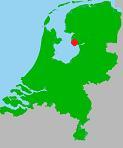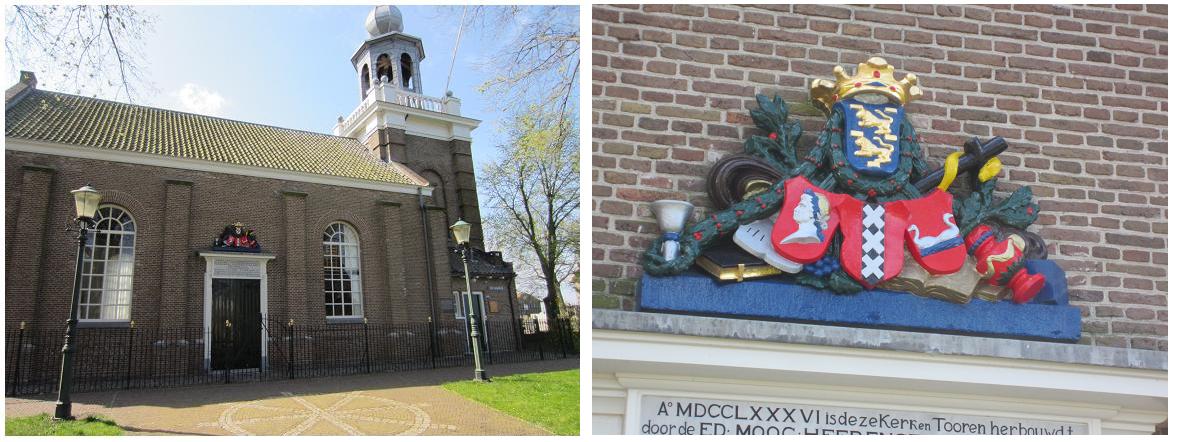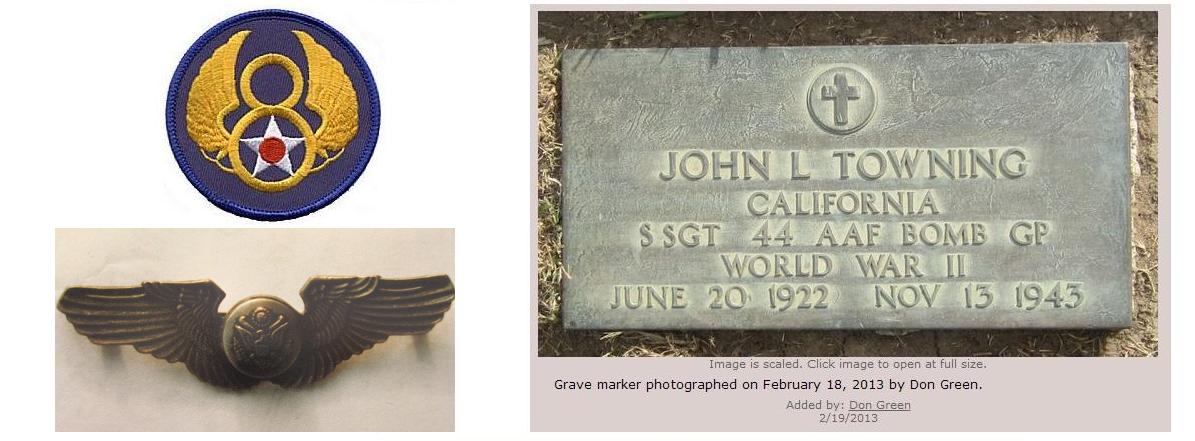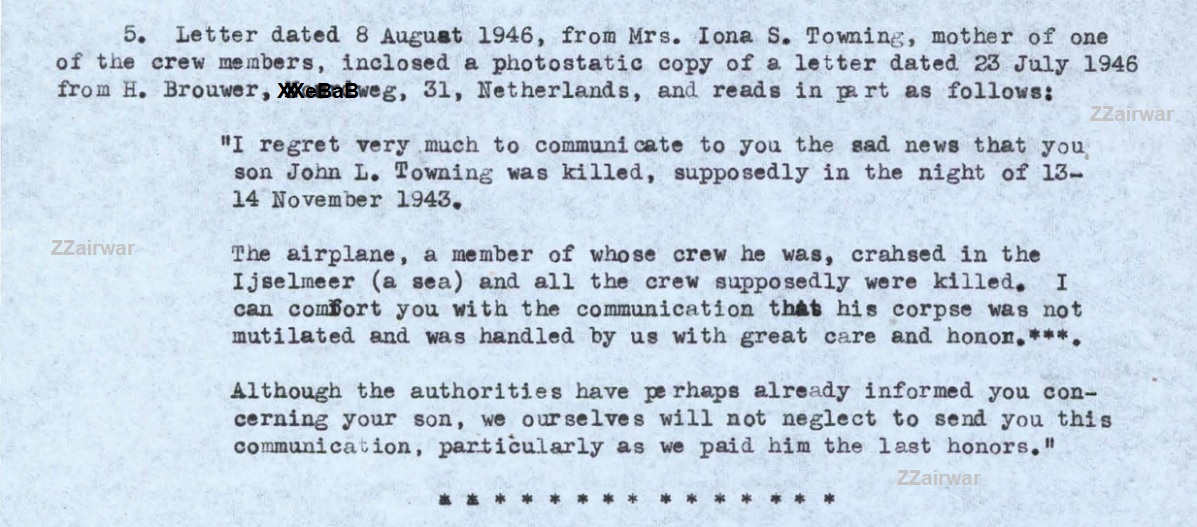

Relation with Lake (class): Former Lake Cemetery (FLC)
Total nr. of casualties buried here (TC): 25 in 1947. Today: 0.
Lake casualties, initially, end WW2 (LC-I): 25
Unknown today: 0. Unknown end WW2: 5
of which unknown from Lake (LC-U): 5
of which unknown from North Sea (NS-U): 0
Initial burial site in WW2: yes, Lake Cemetery east side of Lake (LCE)
Post war burial site for collection and reburial from other sites: no
Cemetery with Lake casualties today: no.
URK
In retrospect Urk was the centre of the airwar over the Zuyder Sea. Local airwarden Mr. Harmen Kramer wrote in his memoirs that they recovered 175 dead Allied airmen from the foot of the Urk dikes and sea, period May 25 1941 until June 6th 1945. Only 25 airmen were buried locally in Urk (see overview below). The others received a coffin on Urk and were sailed over by the Urkers across the Lake to Amsterdam (by order of the Germans) and buried there in the Nieuwe Ooster Begraafplaats (New Eastern Cemetery). So far about 100 airmen from Urk can be traced back in Amsterdam.

Dutch name cemetery: Urk Kerkje bij de Zee.
Full name: Cemetery Church at the Sea.
Address (usable for car navigation):
Kerkstraat 5, Urk.
For reaction or comments; send us an email,
see address and info at CONTACT.
Please use as subject title: 'Urk'.
Before the war, Urk was a small island of only four square km in the centre of Lake IJsselmeer (Old Zuyder Sea). It came to lay on the direct route of the Allied bomber bases in England towards northern Germany/Berlin. It was a distinct landmark (waypoint) and pivot point in the navigation towards the Ruhr Valley and on SOE missions. The airwar would have literally overpassed this tiny island without much contact, however, just before outbreak of WW2, the Dutch had build two long dams (dikes) towards the island. One 23 km long dike to the North and one 28 km long to the eastern shore (the red lines on above map). It was as if Urk had gotten two huge wings or arms, spread out, as a goalkeeper on a field, catching bodies of drowned airmen that were pushed towards these dikes by the wind.
The winds on the Lake usually blow from west-north-west and southwest into the direction of Urk. It is a fact that at least 70 airmen washed ashore at the foot of the dikes, which were patrolled by the Urk airwarden on a horse drawn wagon. The Germans also allowed the airwarden to go out by boat to burning aircraft they spotted half-floating on the water at night, this also filled the Urk morque. Next to that, Urk had a large fishing fleet. Some 30 bodies, by boat recovered or found in their nets were delivered into Urk harbour and then to the morgue. Also Germans patrol boats delivered drowned airmen. The hinterland (polder) behind Urk delivered dead airmen as well, see further below.

Photos above: when the two dikes to Urk were closed, the encircled seawater behind Urk was pumped-out and the area became a polder. The pumping took until 1942 and the 'North East Polder' as it was named, became a wet mud flat at first. Twenty aircraft came down here. A large number choose this flat terrain to make succesful belly landing. American B-17 "Dinah Might" 42-37950, lay here in the mud until 1947 (photo above). There was not much contact Urk - Polder, because the Urk side was wet until late in the war. The crews of downed aircraft that survived tried to evade the polder into the direction of the mainland, to city Kampen. Helped by polder workers or pilot helpers from the eastbank (especially the Kingma-family from Vollenhove). 12 airmen came to Urk from the polder: four dead, four evaded via Urk by boat and four as POW. It is clear that although Urk had a huge swamp with downed aircraft in its back yard, it mainly came in contact with the airwar by means of the dikes, patrol boats and its fishing fleet.
Buried on Urk
After September 10th 1941, burials of Allied airmen on Urk where not allowed anymore. However, from mid 1943 when prowling Allied fighters, bad weather or drifing ice delayed a boat trip to Amsterdam, a number of airmen was buried on Urk again. Below a reconstruction, which took us many years of research:

The first burial on Urk, 25th May 1941, airman 'D. Mc. D.'
Holland was occupied for a year now and sealed off. For the Dutch people, the overpassing Allied aircraft in the sky were the visible symbol that there was still a free world out there, resisting the Nazis. The aircraft were a symbol of hope. Allied pilots, individually flying in 1940 to 1942, fighting and bombing the powerfull Germans on their own, were regarded by the Dutch as true heroes. When in May 1941 a fishingboat from Urk brought in the body of an English pilot for the first time, the word passed through the village as wild fire. The community of Urk arranged a most honorable funeral that shocked the Germans. The whole village attended, former Dutch soldiers carried the flower-covered coffin, Dutch police saluted (see photo left-below) and speaches and prayers were held by the reverend and mayor in the English language.

Above photos explained.
Left the coffin is carried out of the morgue. On the right image the coffin is carried towards the grave. Above images have appeared in many publications and newspaper articles (shown images are photo of photocopies), but were never properly described. We are sure that this is the first airwar funeral on Urk and the date is 25th of May 1941. The coffin is carried towards grave no. 158. Months later a white stone cross will be placed on this grave, a.k.a. 'the Monument'. At the moment of burial the only ID they had on the airman was 'D. Mc D.' He is F/Sgt. Duncan McDougall, crew of Wellington bomber W5375, crashed in the lake on 09/10 April 1941.
The Urker men carrying the coffin on left side of the picture are 'de bril', Jan Kramer and Henk Hartman on front. The men on the coffin-side near the saluting policeman are Cees Zeeman (back), Bertus Gerssen (looking at the camera) and Piet Brouwer (front). In October 1944 Piet was arrested for hiding and helping American airmen and lost his life in a German death camp. The saluting policeman is Harmen Visser (resistance man). At the end of the war (April 1945) he guided advancing Canadian troops on a dike road and was shot dead by a Waffen-SS sniper. The small, older man in black overcoat and hat, on the right side of both photos, is Hendrik Nentjes, the fire brigade commander.
On the photo right, the second man from right, is reverend Ds. van Wieringen. He is the man with the high hat. Behind Rev. Ds. van Wieringen, half visible, is a German secret policeman in a light colored overcoat and light Panama hat. On other photos (there are more photos in this serie) at least three German undercover policemen can be identified. The respect the people of Urk displayed for the Allied airman was reported and caused that such funerals were forbidden after the second funeral on July the 2nd. This was the funeral of airman 'Korcz'. He was also buried in grave 158 (upper coffin, above McDougall). This man was Polish airman Corperal Ludwik Karcz, of Wellington R1322, 305 Sqn (PAF).
Photo below: 2013. Nothing changed. The morgue is left. The trees are the same, only bigger. The top of the red light house is visible over the roof of the white house.

Photo below. The cross
Also a very often published image of 'the Monument', often described only as 'the pilot's grave'. In fact this is grave no. 158 with 'D. Mc. D, buried 25 May 1941' and 'KORCZ, buried 2nd July 1941' (F/Sgt. Duncan McDougall and Cpl. Ludwik Karcz). The line 'ZIJ RUSTEN IN VREDE' means 'THEY REST IN PEACE'. Such large Catholic-style cross is remarkable on this Protestant cemetery. The builder of this monument added a fantasy airforce logo to it. It looks like a WW1 bi-plane with 2-blade propeller, seen from the front. In the background of this photo, there is a man at the fence observing the cameraman. Between the man's lower waist and the front door of the house on the left, the waterline (horizon) of the lake is visible (1.5m under the clothes in the washing line). This cemetery is located on a for this region unusual high spot, named 'the Cliff'.

'The English Corner'
After above momument was placed in Sept. 1941, another 20 airman were buried 25 meters further, in the West corner of this cemetery (blue arrow). Each of the 8 graves there was 3 coffins deep. The Urker people called it 'The English Corner'. Grave markers here were small poles in the ground with numbers, or simple wooden crosses with (part of) names on it. Below drawing is made by an American Quarter Master Grave Registration Company, dated 11 April 1946. They only recorded the American names. They returned in December 1946 and found another 2 American airman among the nameless buried. In grave 613, upper coffin, 1 deep, was found S/Sgt. John L. Towning (B-24 42-40973 "Battle Axe"). In grave 614, middle coffin, deep 2, lay an unknown American. Without doubt a crew member of one of the more than 20 American bombers that came down in the Lake , or also from "Battle Axe".

Letter by a Dutchman, send in June 1945 to the parents of Lt. Paul E. Doyle (Co-pilot B-17 42-102565 "The Ugly Duckling"):
"Your son was drifted ashore Saturday, June 10, 1945, and people thought he must be perished 8 or 9 weeks before. I can tell you the funeral was very very solemn and the Dutch people looked with tears in their eyes. The coffin was carried by members of the Dutch Interior Forces and behind the coffin walked two officers of the R.A.F. A Dutch clergyman spoke at the graveside and talked of the supreme sacrifice of your son's life which was given also for our liberation. There were many flowers and the weather on that afternoon was good. The cemetery is a civil one and lays beside the church. In the corner where your son is buried, with some other militaries, you can see the sea and this point is about 60 feet above the sea level. In the immediate neighborhood there is a lighthouse whose rays of light are shinning over the cemetery. If you desire more snapshots or other information I will give you all you wish. Being a partner of your sorrow, I'm praying".
Below: the English corner present day (right hand side of the morgue). Other occupants are in the graves today. Photo taken from with back to the sea.

Photo below: To Amsterdam. Urker men in work clothes and wooden shoes (and an air-warden) carry the body an airman from the port to the morgue. This is the Prins Hendrik street. Policeman Harmen Visser is walking in front with his bicycle. Once the body was searched and placed in a coffin, burial could follow. Based on the calmness and the appearance of a standard procedure, we believe this is 1942 or 1943 and the victim with coffin was sailed to Amsterdam for burial there. Notice the woman looking from the top window and the cloths hanging in the line fixed between the strings of the rope. This is a photo from a photo hanging on the wall in the museum of Urk.

Relation Urk - Amsterdam.
The 'cliff' Urk was owned by Amsterdam for 800 years. The Amsterdam crest is still above the Urk church entry today. Urk is 50km away from Amsterdam., but the Urk lighthouse guided the ships from the North Sea over the Zuyder Sea towards Amsterdam. When the Germans ordered a halt to burial of Allied airmen on Urk, the Germans thought the Urkers would bring the dead to nearby city Lemmer or Kampen. But although Urk was newly connected to these cities by the new dikes, the town most connected to Urk was still Amsterdam. So the dead airmen were sailed over to Amsterdam. Next to that, German patrol boats of the Wasserschützpolizei and convoy-escorting trawlers of the Kriegsmarine were almost daily in Urk and took also coffins back on to their home port Amsterdam.

Because of Allied air supremecy in the air from mid 1943, the transport of the dead over the Lake to Amsterdam was stopped. Burials on Urk were resumed. S/Sgt. John L. Towning was recovered 3,5 months after his crash in the Lake (B-24 42-40973) and buried on Urk on 29 February 1944 as 'unknown English airman'. He was not sailed over to Amsterdam, which was too dangerous because of allied fighters shooting on everything. His body was identified in the second identification round December 1946. Bottom left an USAAF airforce wing, left as gift to a family on Urk by an American evader passing through Urk.

.
Urk to Amersfoort
The Urk war graves were exhumed in July 1947. The Commonwealth and Polish airmen were reburied in Amersfoort (Leusden-Zuid) 'Rusthof'-cemetery, on the post war added rows 9, 12 and 13. The blue colored graves are the airmen from Urk. See for more info on the Amerfoort war graves our site article on Amersfoort 'Rusthof'.

Below photo: Amersfoort 'Rusthof'. The war graves on this civilian cemetery are on field 13 (plot 13). On row 12, the Polish airmen from Urk rest next to each other. From left (cross) to right: Jerzy Rozanski (and his crew from Lancaster LL807): Rajmund Bardzo, Marian Wroblewski, Ludwik Karcz (Wellington R1322), Hahn and Waclaw Bakun. On row 13-13 (most right), the 3 headstones nearest to the camera are the Canadians (RCAF) from Urk: F/Sgt. Stanley F. Mattoon, F/O Samuel L. McBurney and W/O Charles C. Trudell.

Photo below: the German militair from Urk. Washed ashore and buried on Urk on 5th May 1945 (Liberation day in Holland). Moved in 1957 to here (Ysselsteyn German central war cemetery in NL, grave CK-11-273). In Urk they had found on his body only 'OEFFRETE'. We believe this is his rank: Obergefreiter. We presume he is an airman of the Luftwaffe. Shortlist of who he can be wil be added here next year.

Our file on Amersfoort Oud-Leusden War Graves: http://www.zzairwar.nl/dossiers/987.html
Sources & Thanks to:
- Co Maarschalkerweerd
- Evert Weerstand (D.E.L)
- Pieter Hoekstra
- Robert Hofman
- Stichting Urk in Oorlogstijd
- Museum Urk
- Teun PATS Schuurman
- Klaas Kramer (1941)
© ZZairwar (Zuyder Zee Air War).
File 915. Urk Island War Graves 1945
- Details